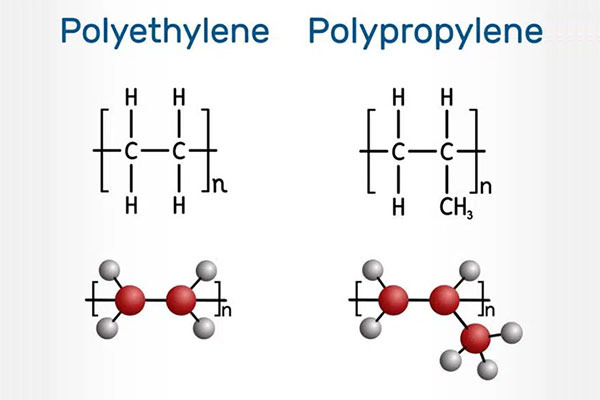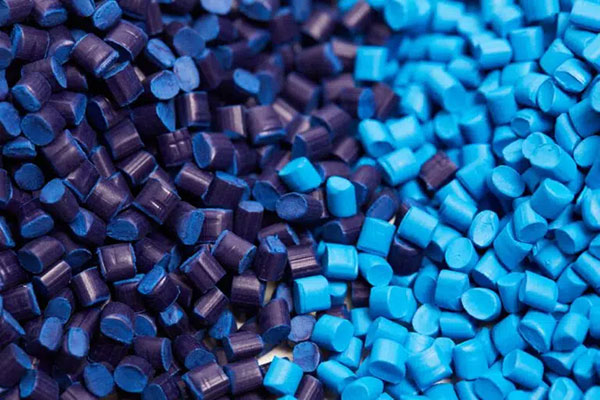

Minneapolis, Minnesota, 55413
United States
651-999-8410
www.mdi.org MDI Company Profile


Polymer plastics are ideal for a wide range of packaging applications because of their barrier qualities, which help keep items fresh, avoid contamination, and extend shelf life. Polymer plastic containers, for example, are especially common in manufacturing facilities. They are large molecules that share standard recurring structural units called monomers. These monomers are covalently linked together to create a polymer.
They have a high molecular weight and are made by a synthesis process known as polymerization. Polymers are classified into two broad categories based on their synthesis processes. Due to other methods, they may be generated if the monomers have double bonds between their carbon atoms. When two monomers are united in various polymerization operations, a tiny molecule such as water is eliminated. These polymers are referred to as condensation polymers. Polymers exhibit considerable differences in physical and chemical characteristics compared to their monomers.
Additionally, their properties may vary based on how many repeating units are in the polymer. Polymers are abundant in nature and play an essential role. Companies use synthetic polymers for various reasons. Polyethylene, polypropylene, PVC, nylon, and Bakelite are the primary examples of synthetic polymers. When synthesizing synthetic polymers, the process must be precise to produce the desired output consistently. Understanding their distinctions and how to utilize them is critical. Thus, you need to understand their differences and appropriate use.
Polyethylene’s Structure and Chemical Properties
Polyethylene is a polymer composed of ethylene molecules consisting of two carbon alkane units [-CH2CH2-]. It is a thermoplastic polymer. The majority of its physical features are molecular weight dependent. The most prevalent varieties are High-Density Polyethylene (HDPE), Medium-Density Polyethylene (MDPE), and Low-Density Polyethylene (LDPE). Additionally, they are well-known for their chemical resistance as they do not react with strong acids or bases upon exposure. Polyethylene is a chemically inert and transparent material which implies that, unlike a transparent material, it allows light to flow through but does not create images.
Co-polymerization of ethylene is possible, but it compromises its purity. However, polyethylene is less susceptible to co-polymerization than other polymers. As a result, ensuring its purity is often more expensive. There have been significant environmental worries about polyethylene because it does not naturally disintegrate unless treated. Nevertheless, other approaches have been devised and are being used to address this problem. Polyethylene is currently produced using sugar cane, wheat grain, and sugar beet to mitigate its impact on the environment.
Applications
Polyethylene is the most common thermoplastic consumer good, with many uses. The following are some of the more frequent applications:
It is certified for food packaging because of its resistance to water absorption.
Plastic’s strength and stress resistance are well suited for consumer items such as buckets and bins.
Due to their high tensile strength, they make excellent packaging materials that are durable and long-lasting.
Polypropylene’s Chemical Properties and Applications

Polypropylene is another thermoplastic polymer that is stiffer than polyethylene. Polypropylene comprises propylene monomer units composed of three-carbon alkane units [–CH2(CH3)CH2]. Due to its rigidity, it is often utilized in manufacturing molded material. Propylene is often copolymerized with ethylene molecules to increase its elasticity. Ethylene propylene rubber, to be precise. Although polypropylene is less transparent than polyethylene, it may be translucent by removing the color.
Polypropylene is also classified according to its molecular weight. However, most polypropylenes have a density in between that of High-Density Polyethylene and that of Low-Density Polyethylene. When exposed to light, it undergoes chain disintegration, resulting in oxidation processes and the formation of free radicals, raising further concerns about health and its safety in the environment.
Uses and Applications
MDI corrugated plastic solutions use polypropylene frequently in making corrugated plastic containers for transport, inter-facility good transfer and warehouse bins for storage. Polypropylene reusable boxes, sheets, hopper bins, custom containers are often used during in-plant storage and stacking, inside hot or cold processing facilities, and while transporting or displaying.
Polypropylene
Provides convenient stacking & nesting
Made of food-grade, high-density plastic
Delivers protection & reduces damage
Provides reusability & in return cost savings
Offers moisture control & optional fumigation holes
Polypropylene Pros and Cons
Polypropylene is an excellent injection molding material. Apart from its typical plastic applications, polypropylene excels in fiber applications, which expands its range of applications beyond injection molding to include packaging materials for hopper bins, boxes, sheets, rolls, and custom applications that need rigid dividers. As with any other polymer, polypropylene has several benefits and limitations that make it more appropriate for some applications than others.
Pros
It’s a less costly material.
It’s very resistant to moisture.
It possesses high flexural strength because of its semi-crystalline nature.
It has good chemical resistance over a wide range of bases and acids.
It contains good fatigue resistance, thus having a good impact strength.
It’s resistant to electricity and is, therefore, an excellent electrical insulator.
It is more easily repaired from damage.
Cons
Its high thermal expansion coefficient precludes it from being used in high-temperature applications.
It is photodegradable by ultraviolet light.
It has a low resistance to chlorinated solvents and aromatics.
It is difficult to paint due to its weak adhesion capabilities.
It is very flammable.
It is susceptible to oxidation.
Despite its flaws, polypropylene is an excellent material. It has a unique combination of characteristics not found in any other material, making it an ideal option for various tasks.
Polyethylene Pros and Cons
Polyethylene is the world’s most widely used plastic to make shopping bags, toys, and shampoo bottles. MDI is an expert at manufacturing and extruding poytheylene to create double and single faced rolls / sheets, trays, totes, bins and boxes. Polyethylene benefits and cons include the following:
Pros
Polyethylene has several advantages, so it has been used to manufacture various plastic items.
Polyethylene is durable and water-resistant, making it last longer when exposed to the elements compared to other polymers.
Although its strength and hardness are low, it is very malleable and has a high impact strength, making it stretch rather than shatter.
Depending on its, it can be almost transparent to opaque.
While polyethylene is an excellent electrical insulator, it may get electrostatically charged.
Its low density makes it suitable for packaging.
Polyethylene can be recycled into other products.
Its heat-resistant properties enable it to be used in high and low temperatures.
Cons
Despite its widespread use, polyethylene has a few drawbacks that may dissuade manufacturers and consumers from its utility.
It takes a long time to degrade and may remain in landfills for decades.
Polyethylene is mainly derived from petroleum or natural gas, with limited resources.
Producing polyethylene consumes a significant amount of energy and results in considerable carbon dioxide emissions, a greenhouse gas that contributes to global warming and climate change.
The recycling process is complex and may take a long time.
Differences Between Polypropylene and Polyethylene

Polyethylene and polypropylene are plastics composed of polymers. Most polymers may be broken down into discrete components that serve as the polymer’s building blocks; these single units are monomers. Polyethylene’s monomer unit is ethylene, while polypropylene’s monomer unit is propylene. The primary distinction between polyethylene and polypropylene is that polyethylene is produced by polymerizing ethylene monomer units, while polypropylene is produced by polymerizing propylene monomer units.
Which Is the Best Polymer Between Polyethylene and Propylene?
Polyethylene and propylene plastics provide comparable advantages. Along with being very pliable, they are also moderately impact-resistant, which means that strength is not a worry when using these polymers. Additionally, both polymers are heat resistant and have minimal toxicity to people. Their low toxicity is another consideration if you use plastic for food and beverage containers.
Finally, each of these plastics is recyclable, which may be advantageous for environmentally aware businesses involved in producing many temporary things, such as food containers and signage. There are several benefits to utilizing these plastic materials that firms should consider before final selection.



